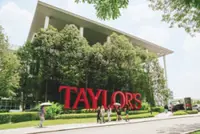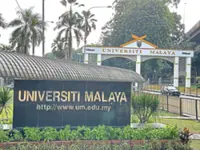The institution believes that purpose-driven learning is key to success in the future of work
DESPITE its young stature, Taylor’s spectacular rise in the recent QS World University Rankings at #284 placed the institution as the top private Malaysian university in the Southeast Asian region for the third time in a row.
This achievement places the institution at the top one percentile of the world’s most influential higher education institutions, alongside the likes of other prestigious and elite universities with over 100 years of education history.
The latest achievement comes on the back of the university’s long-term ambition of pursuing balanced excellence in education, as well as prioritising continuous curriculum reform that are aligned with the requirements of the ongoing social and economic transformation.
"Since our participation in the QS Ranking exercises back in 2016, we have partnered and collaborated with some of the most influential universities, employers and academics. Our students can tap into our network of resources to connect with experts and specialists, which could lead to internships or full-time employment,” said Taylor’s University vice chancellor and president, Prof Michael Driscoll.
“Our efforts have borne fruit and this is evident in our achievement as one of the world’s top 100 Employer Reputation scores for the second time,” he added.
The institution’s indomitable drive to success is attributed to their emphasis on providing meaningful and innovative learning through its multidisciplinary learning experience (MLE), built on top of its distinguished Taylor's Curriculum Framework, which allows students to mix and match their topics and roll out interdisciplinary programmes that combine components of two or more disciplines into a single programme of study.
Taylor’s was one of the pioneer institutions in the region to implement compulsory multidisciplinary projects across all its undergraduate programmes.
However, in an ever-evolving socio-economic landscape, this then begs the question – how will this help graduates prepare for the jobs of the future and will it equip them with the demanded skills required by the industry?
The onset of the Covid-19 pandemic raised awareness of the new-age problems faced by the world today.
This, coupled with technological change and globalisation, as well as demographic and climate change are reshaping the way we approach each problem, as it requires us to look from various angles for deeper understanding and more meaningful long-term solutions.
Taylor’s University deputy vice chancellor and chief academic officer Prof Dr Pradeep Nair explained, “The magnitude and complexity of challenges posed by the pandemic transcend multiple areas of expertise. Such complexity makes it difficult to identify the most effective solutions.
“Even as the world moves towards endemicity, the pandemic’s knock-on effects will continue to materialise. So being discipline-specific in solving future world problems will no longer be enough.”
Translated in real life, multidisciplinary solutions go beyond just collaborating, but rather having a good understanding of learning necessities across various disciplines.
This means that to solve real-world problems, governments and organisations would need talents with fluent skills in the culture, language, methodologies and methods of multiple disciplines. Interdisciplinary education especially helps in developing problem-solving, critical thinking, evaluation, synthesis and integration skills.
“Providing students with the right environment, networks and resources at the university level is crucial to enable them to thrive in their future careers. Taylor’s guiding principle in its MLE approach is to equip students to live out their mission and goals through purpose-driven learning,” Nair said.
“Today, 75% of our student population are engaging in subjects and modules outside of their fields and they have been working on real-world projects across faculties in what the institution describes as ‘impact-labs’, supported by the institution’s Taylor’sphere community,” he added.
In 2021, Taylor's University students Bernard Yap, Jasper Ang, Norman Heng, and Ong Wea Hung, together with Taylor's Me.reka Makerspace, developed DuckiePi to address the need for a device to make online learning accessible to children from B40 communities during the pandemic.
The cost-efficient devices are powered by Raspberry Pi and are suitable for online learning and basic computer applications for those in need. The device includes a monitor, webcam, keyboard, mouse and a converter cable that connects to any smart TV or computer monitor.
So far, Taylor's University has donated more than 150 DuckiePi devices to underprivileged communities in PPR Lembah Subang, school children and teachers in the rural school of SK Long Sukang in Lawas, Sarawak, as well as families across Malaysia via various non-governmental organisations.
Since June last year, the institution via its School of Education has been working on a community project to address the learning poverty gap among B40 communities called ‘Projek Bacabaca’.
The programme is designed to ensure students aged six to nine years from underserved communities are able to read at grade level, helping them perform better at academics and other classroom activities.
Phase one of the project concluded in December 2021, where 30 students from PPR Seri Alam in Kuala Lumpur were paired with Taylor’s reading coaches and conducted one-on-one English and Bahasa Melayu reading sessions over the phone.
The programme saw an 86% improvement rate in the students’ reading performance in English and 64% for their Bahasa Melayu. The project is expected to reach more students in the upcoming months as it looks to commence phase two of the programme.
More recently, Taylor’s University and West Bohemia University students and academics are working on a multidisciplinary collaboration to design a water rescue device called ‘Catabox’.
The device is conceptualised following lessons learnt from the floods in Malaysia and Czech Republic.
With its mission to provide safety to children and pets in flood evacuation situations, the Catabox was designed in a unique compact and collapsible form – allowing easy storage in small spaces and can be quickly inflated with a provided air pump for emergency use. The device also comes with a storage space for utilities and equipment.
To find out more about Taylor’s Digital Open Day, visit their website here.








